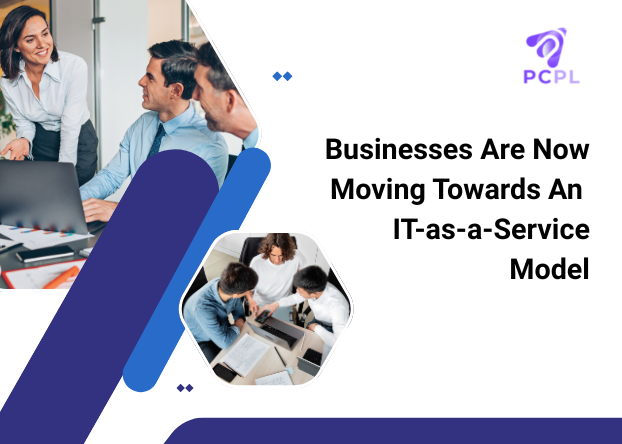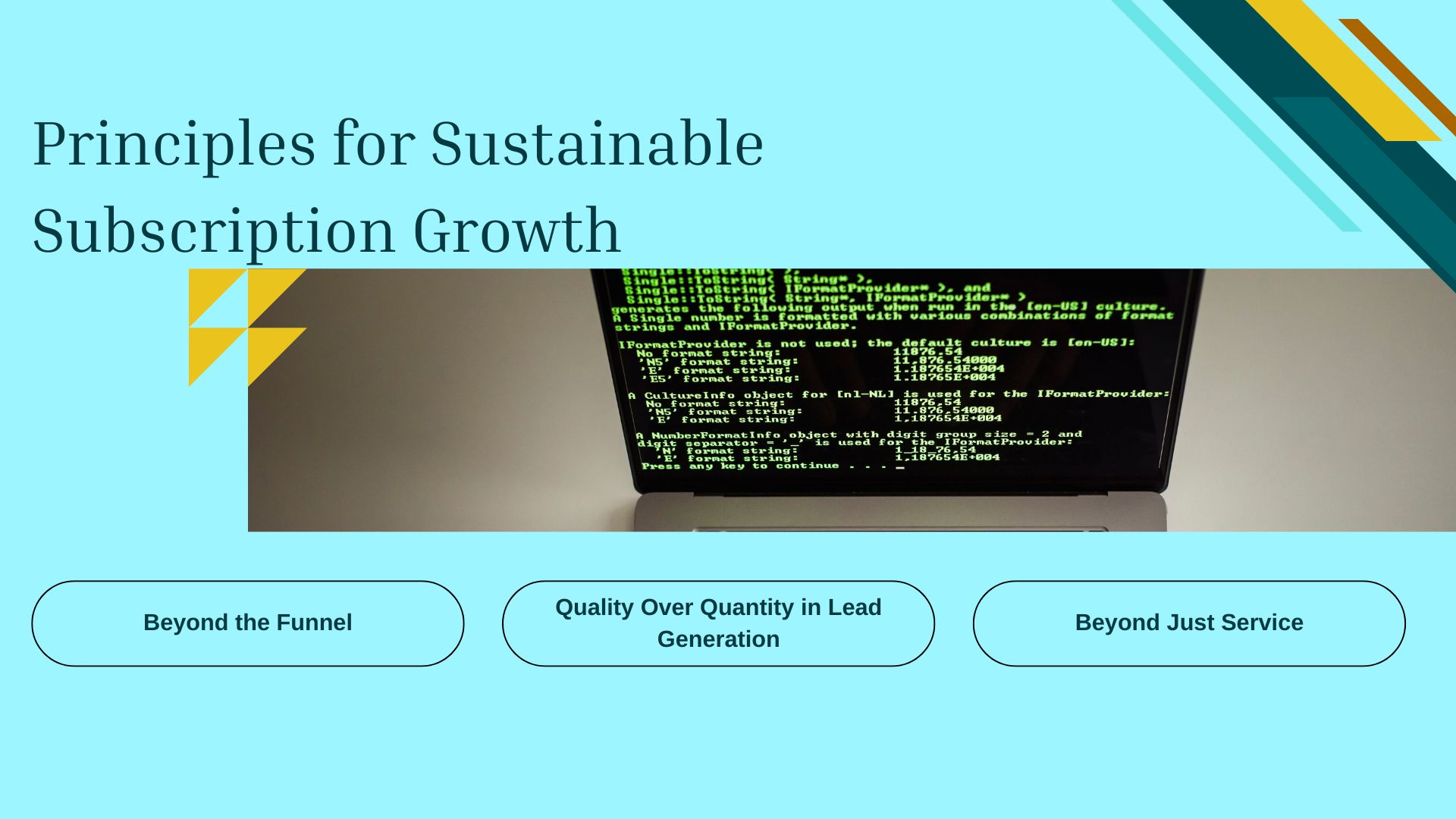
Businesses Are Now Moving Towards An IT-as-a-Service Model
For years, Software as a Service (SaaS) subscriptions were the golden child for tech entrepreneurs and investors, experiencing explosive growth. The SaaS capital index hit its peak in 2021, only to plummet months later, culminating in firms raising their lowest amounts in a decade by the end of 2022.
Subscription businesses collectively rose over 300% between 2012 and 2018, a growth rate that was five times faster than S&P-500 companies. Post-pandemic, the offerings increasingly targeted larger enterprises, as more firms started integrating subscription services into their core product lines.
The Evolution of SaaS

The rise of Software-as-a-Service (SaaS) was fueled by a number of factors on both the supply and demand sides.
Cloud technology enabled companies to offer affordable software subscriptions, often using a “freemium” model. This necessitated a cost-effective customer acquisition strategy. The SaaS model, with its reliance on younger, less experienced sales teams, significantly reduced hiring and compensation costs compared to traditional enterprise software. An inside sales force, doing outbound calls instead of in-person visits, further lowered travel, and administrative expenses.
This approach was sustainable for a time because digital marketing was an inexpensive way to generate leads, and the straightforward value proposition simplified the sales process.
On the demand side, customers became more comfortable with remote vendor interactions. Pre-sale research capabilities and online demos facilitated this shift in purchasing behavior. Further, an extended period of low interest rates and abundant investor capital allowed many SaaS firms to prioritize “land-and-expand” economics, focusing on growth without immediate concern for profitability. The COVID-19 pandemic further accelerated this trend, temporarily inflating growth for many subscription-based businesses.
Principles for Sustainable Subscription Growth
Recurring revenue, delivered through subscription services, is far from being outdated. In fact, by understanding the fundamental dynamics of this model and learning from past challenges like the SaaS crash, its most promising era lies ahead.

1. Beyond the Funnel
Traditional sales models often fixate on customer acquisition, visualizing the process as a “funnel” or “pipeline.” However, this perspective falls short for recurring revenue businesses, where the customer lifecycle more closely resembles a bow tie, not a funnel.
In a subscription model, the majority of revenue is generated outside the initial marketing funnel. Historically, many B2B markets relied on products with hefty upfront costs, promoting a business development culture centered on buyers with substantial budgets. It’s no coincidence that BANT (Budget, Authority, Need, Timing), IBM’s sales methodology from the 1960s, starts with “B” for the buyer’s capital budget.
Yet, most SaaS services fit within operating budgets, purchased based on the immediate impact they provide. For customers, the significant expense often lies in the time their people spend using the service, which can dwarf the purchase price. This is why our lifecycle framework emphasizes “commit” rather than “closed/won.”
This shift has direct implications for pricing. Sellers must communicate impact by linking price to the relevant units of customer value. HubSpot, for example, initially charged a flat monthly fee but later tied pricing to the number of contacts in a customer’s database. As a client’s database grew, the value of the service increased, allowing HubSpot to share in that success through impact pricing. For other subscription businesses, the value unit differs.
Fintech firms often charge per transaction, as usage tends to be episodic. Other companies bundle features with ancillary services. In each case, the chosen value unit shows how you sell and to whom.
2. Quality Over Quantity in Lead Generation
When asked how to double revenue, most sales leaders instinctively call for “twice the leads and twice the sales reps to call them.” This assumes a linear correlation between leads and wins. SaaS operates as an interconnected system- lead generation and qualification affect conversion rates and retention, thus creating a compound effect.
A marginal improvement in relevant leads can lead to a significant increase in Annual Recurring Revenue (ARR). The SaaS crash showed how this snowball effect applies to growth as well as decline in subscription models.
With subscriptions, shift your lead-generation mindset from quantity to quality. One reason for this is the increasing clutter and cost of traditional lead sources like paid search and online marketing, which now exhibit diminishing returns. The average cost per lead via Google Ads, for instance, surged by approximately 20% in 2021 and another 19% in 2022, with even higher increases in sectors like entertainment, travel, and household goods. Similarly, conversion rates dropped by around 14% in 2022, continuing a multi-year decline as the digital space became more crowded.
A more fundamental reason to prioritize lead quality is the shift in risk from buyer to seller in a subscription model. With an upfront purchase, the buyer takes on most of the risk associated with installation, integration, and value extraction. With the subscription model, the seller builds the infrastructure, develops the software, and hosts the service.
Since fractional revenues are generated monthly or quarterly, many subscription businesses take months to recoup customer acquisition costs and rely on annual renewals for profitability. In this context, it’s important to identify the right customers early, as the costs of “false positives” are enormous.
3. Beyond Just Service
In subscription models, recurring revenue is a direct result of recurring impact, and service plays an important role throughout the customer lifecycle. A prospect might click for more information on your website after reading a content marketing piece. If the product is sold via trials, the service offered during that period is important. Most subscription offerings demonstrate their impact through relevant usage, and usage itself is most influenced by the onboarding process, not just a demo or hypothetical ROI during the acquisition phase.
This varies from the order fulfillment and problem-resolution role of service in traditional sales models. Some SaaS firms accurately refer to their service groups as Customer Success (CS) teams because they are vital in closing sales, onboarding customers, conducting business reviews that track ongoing product impact, and facilitating the expansion phases of the customer lifecycle.
CS teams for apps like Slack provide monthly reports detailing one-on-one and team conversations, content sharing, and more. This makes the value of a thriving, often distributed, user community visible to customers while providing CS with usage data that supports recurring impact and revenue.
On the contrary, a contributing factor to the SaaS crash was a misunderstanding of CS’s role. When demand slows and cost-cutting is necessary, firing a CS representative often feels like an “easy” decision to many executives- “After all, we’ve already won the customer.” However, CS impacts revenue in at least two ways that, combined, usually outweigh the cost savings from reducing CS headcount-
- Reducing churn in a business model where customer lifetime value (LTV) is highly correlated with subscription length. Increasing customer retention by a month or two usually has a disproportionate impact on LTV in a subscription model.
- Increasing usage and expansion through renewals, upsells, and potential cross-sells to others within the same company or household, all at a lower cost compared to acquiring new customers.
With advancements in technology and the “Internet of Things,” subscription services offer a great opportunity for companies across various sectors, far beyond traditional software. Despite trendy discussions about “predictable revenue,” no business model manages itself. Learning from the early movers in this space, both their successes and their failures, is important.
References
https://www.bairesdev.com/blog/it-as-a-service/
https://hbr.org/2023/04/the-rebirth-of-software-as-a-service
